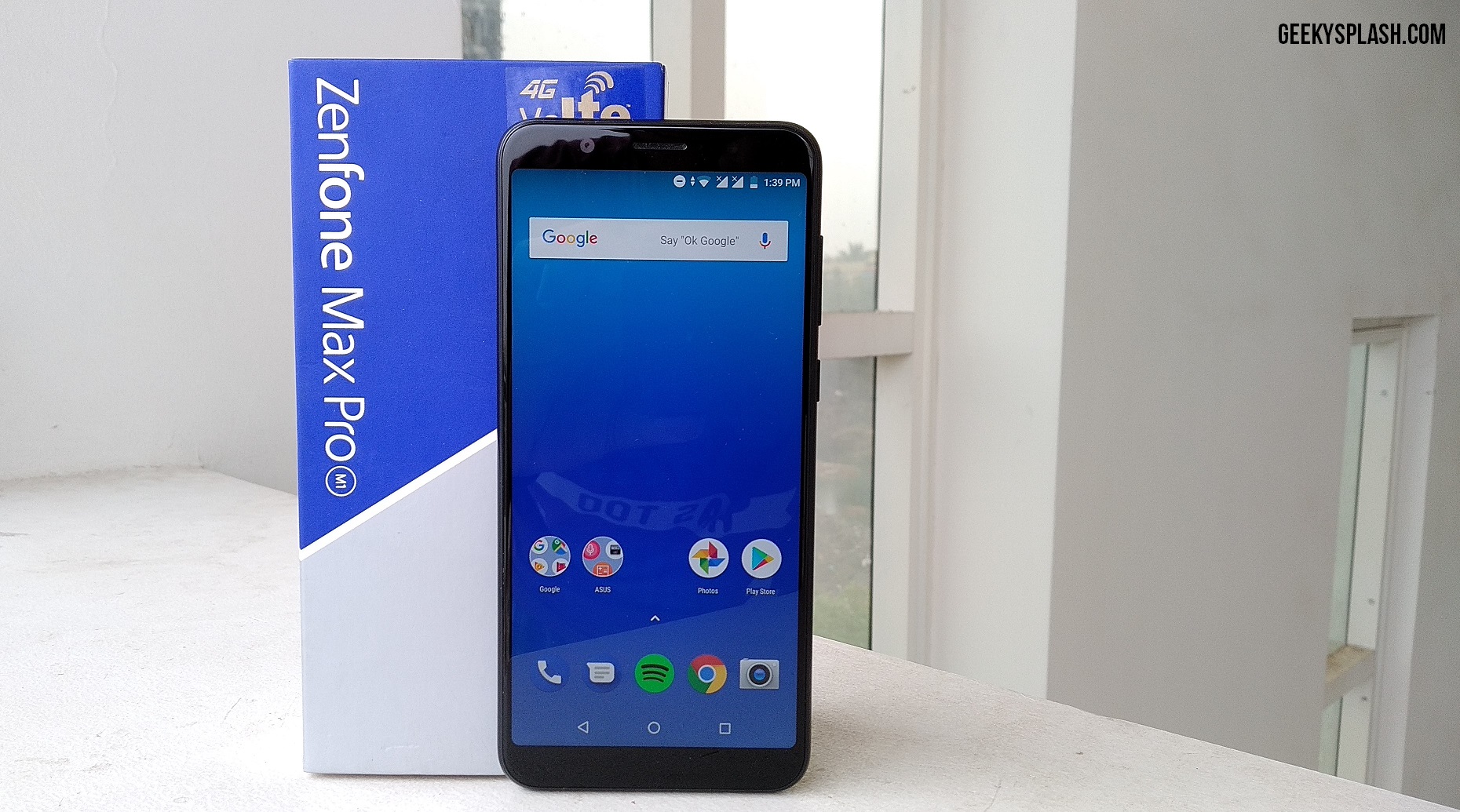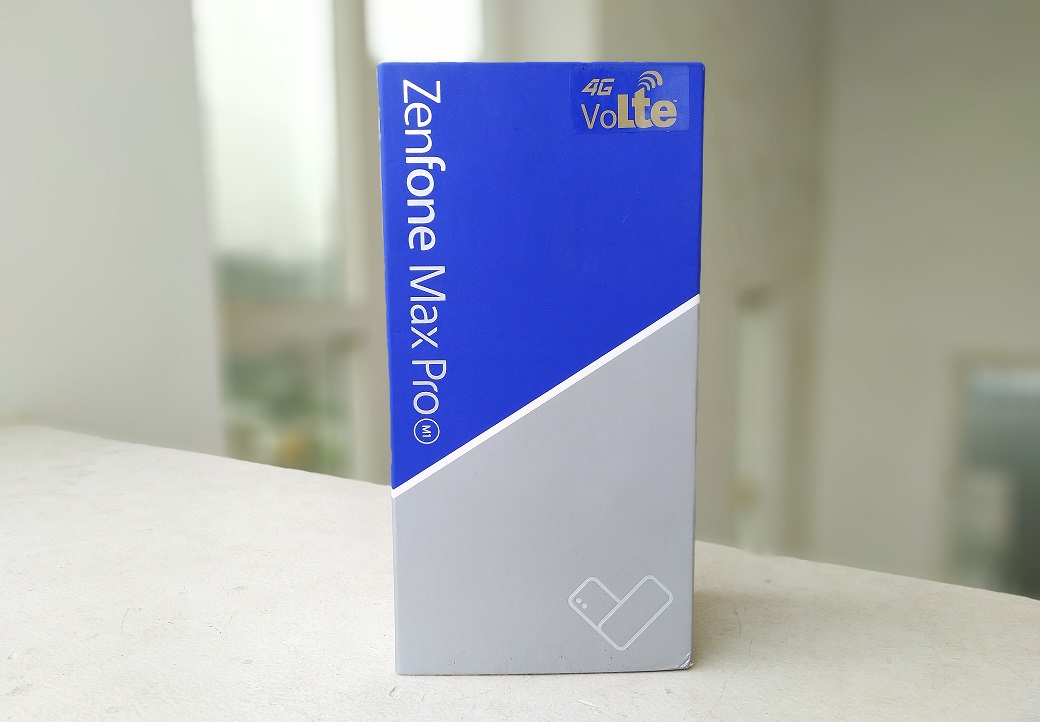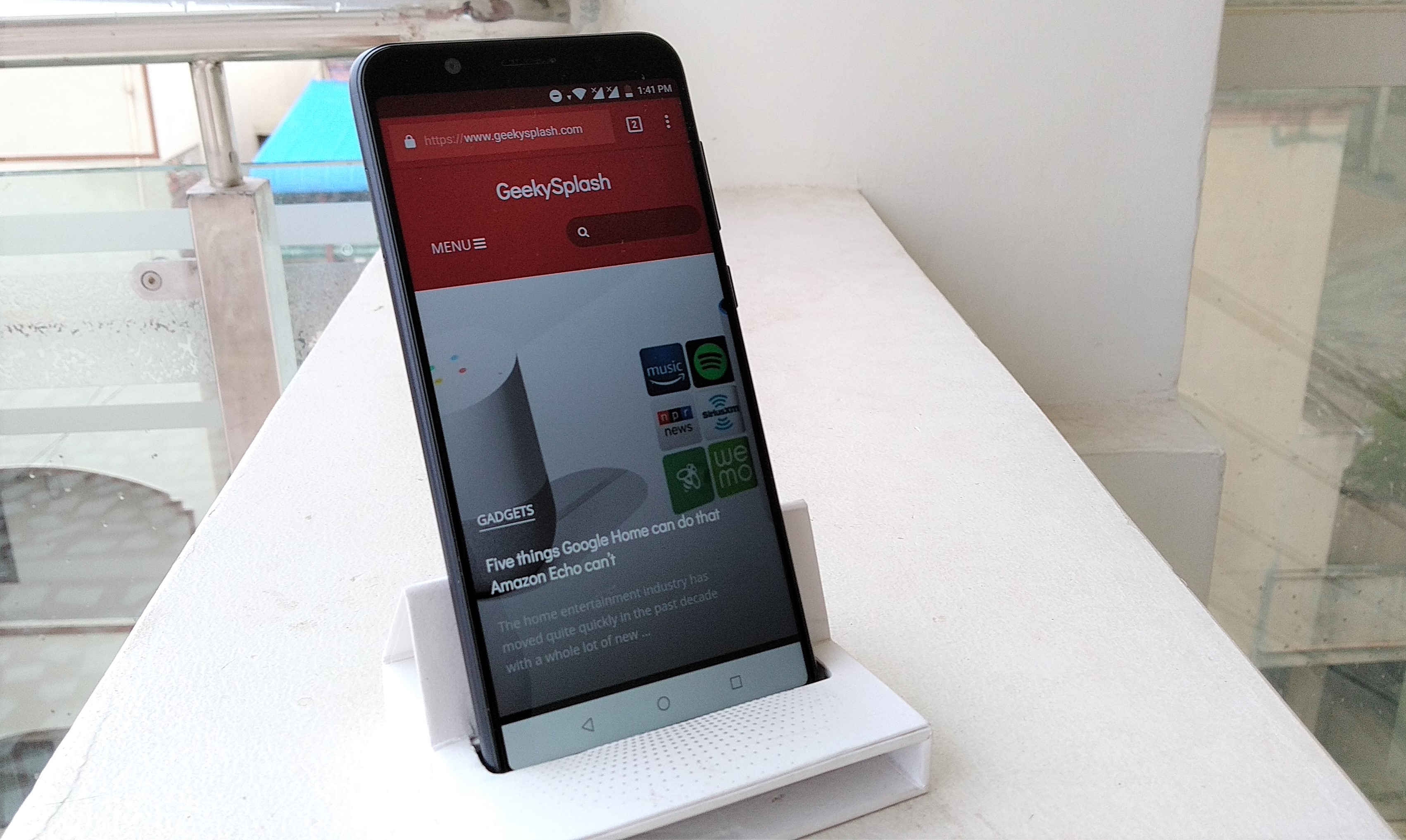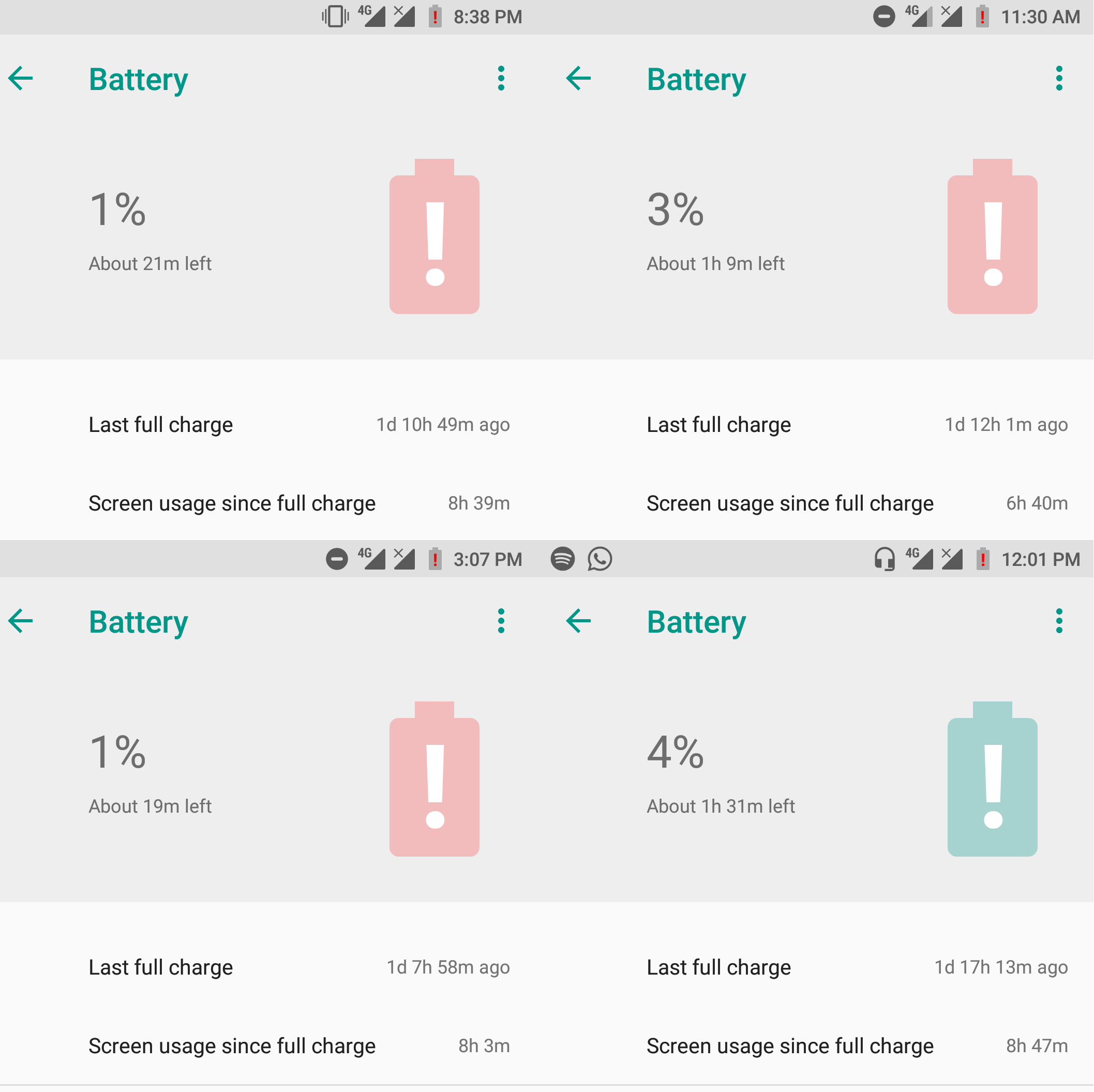After last year’s maiden Asus Zenfone 4 Selfie Pro launch, Asus launched the Zenfone Max Pro M1 this year. Unlike its previous phones for the last 2 years, this one is truly a deal breaker. It offers great specs at a very competitive price range. With the arrival of Oppo’s Realme and the undisputed ruler of budget phones, Xiaomi will the Zenfone Max stands apart from the crowd? Let’s find out.
Table of Contents
Asus Zenfone Max Pro Review
Asus Zenfone Max Pro M1 comes in 3 variants:
- 3 GB RAM – 32 GB Internal Memory – Price : Rs.10,999/-
- 4 GB RAM – 64 GB Internal Memory – Price : Rs. 12,999/-
- 6 GB RAM – 64 GB Internal Memory – Price : Rs. 14,999/-
While 3 GB RAM and 4 GB RAM variants are available on sale at Flipkart, while the 6 GB RAM is yet to be released. We got the 3 GB variant device for reviewing and our review span was a week.
In the box:
- Asus Zenfone Max Pro M1 [Black]
- Max-Box
- USB Cable
- Power Adapter (Output: 5V 2A 10W)
- SIM Ejector Tool
- Warranty card and paperwork
Build – Looks & Design
The Zenfone Max Pro has a generic design with the aluminum metal build, vertical dual camera setup to its rear. We got the Black variant of the device and it looks kind of navy blue from the rear.
- Dimensions (Length x Height x Thickness): 159mm x 76mm x 8.46mm
- Display: 5.99-inch Full HD+ Display, Oleophobic coated Glass – 403 ppi – 2.5D Curved Glass
It a little plastic to the top and bottom of the phone and the metal back catches smudges easily. It has the fingerprint sensor to the center and a vertical dual camera setup with flash to the top-left. Though it has a 5000 mAh battery, it doesn’t feel much heavy. To the front, it has the LED Flash, Front Camera, Earpiece and the LED Notification bulb. To the bottom, it has a headphone jack, standard USB Port, and a speaker and a tray for dual SIMs (Nano+Nano) and a dedicated micro-SD Card on the left side of the phone.
It’s 2018 and yeah 18:9 displays are now the generic design and Asus had implemented it. The device is good to hold, not slippery and doesn’t feel bulky. On a whole, the design doesn’t offer much and it is just good.
Performance
I say this is the real selling point of the phone than the mammoth 5000 mAh battery. For a performance seeker like me at least. It sports a Snapdragon 636 which is a terrific processor. Let’s talk about its performance after we complete a round-up of all its specs.
- Processor: Qualcomm Snapdragon 636 Octa Core 1.8 GHz
- GPU: Adreno 509
- 3GB RAM, 32GB Internal Memory
Apart from the octa-core SD 636, it sports an Adreno 509 GPU, 3GB RAM and 32 GB Internal Storage. It has a dedicated memory card slot as well when you run out of the 32 gigs. It supports 4G on both the SIM Card slots and also supports VoLTE on both the SIMs.
During our review period, we played games like PUBG. The Zenfone Max Pro M1 runs the game in medium graphics mode by default. Neither of the devices heated up or lagged. App switching and also with heavy usage, the phone’s performance was excellent. RAM management is pretty good and with Android Oreo, it seemed better. Regarding storage, the 32 gigs of internal (out of which you get 23GB to use) seem to fill up pretty fast. I was able to have 10 gigs of storage left after the end of my review period. Of course, I installed only a few apps. Maybe if you buy this device, you have to keep an eye on it. Yes, the memory card helps but still, you can’t install apps in your memory card right. The fingerprint sensor is a little slow compared with the Xiaomi’s.
The Zenfone Max Pro is exceptionally good in means of connectivity. The call reception and mobile data worked great even in places with poor network signal.
The MaxBox which comes bundled with the box is something nobody asked for ?. Jokes apart, it does sound amplification, multiples the sound from the speaker. It is just okay.
During our review period, we didn’t find the device getting heated much. On a whole, the Zenfone Max Pro is a great performer.
Software
Asus Zenfone comes with ZenUI on top of Android Oreo, which Asus claims is Pure Android with some Asus additions. It added few additional features like gestures and added, replaced few default applications with its own ( Calculator, Voice Recorder, and FM Radio).
- Android Oreo 8.1 ( a little ZenUI )
During our review period, both devices got updates which are almost routine for all vendors these days. Initially, the Zenfone didn’t even have a default Gallery app, which used Google Photos for image previews. During the end of my review timeline, I’ve received the update which had Snapdragon Gallery which showed image previews. However, it is not accessible from the App Drawer.
The best thing I loved in the Android Oreo is the blue light filter. There is a setting in which the device adjusts the amount of blue light filter according to the time of the day. More example, during nights it makes the display more yellowish tinted, which reduces eye strain and also makes you sleep.
The best part, Asus told they’ll give Android updates till the next two Android versions which mean Android P and Android Q. What more can anyone ask?
We prefer Zenfone Max Pro M1 in this category although we’re not fans of Stock Android. That said, updates are faster on Stock Android devices than others.
Camera
The Max Pro has the 13 + 5 Megapixel vertical dual-cam setup to the rear and 8 Megapixel front camera. Though it looks good on paper, its the Snapdragon Camera App is a little disappointment. Its front camera adds some reddish tint on the photos. The rear camera does a good job and the best part it supports 4K Video recording.
- 13 MP+5 MP, (Dual Camera)
- Front Camera – 8 MP,1.0μm, f/2.2 aperture
- Supports 4K UHD Video Recording
The photos shot with rear camera appear to be natural and there isn’t any enhancement to the photos. Photos shot in low light are just okay.The videos taken with the device looked too shaky thanks to the absence of EIS and OIS in the device. As said earlier, the front camera is just average. I feel the addition of Pixel Master App (camera app used in Asus Zenfone Selfie Pro ) will make the phone strongest among all the phones in the price segment. However, Asus just dropped an OTA to address the camera and fingerprint sensor issue (after our review period anyway). We expect the performance had been improved. Here are a few samples we shot with the Zenfone Max.
Battery
Here comes the ‘Max’ of the Zenfone Max Pro. Asus has a habit of adding the suffix ‘Max’ to the phones which sport a large battery. The Asus Zenfone Max (2016), Asus Zenfone 3 Max and the Asus Zenfone 3S Max are examples. It sports a mammoth 5000 mAh battery which gave us 8 hours of Screen on Time on average, even after we played heavy games like PUBG every day. It lasted for more than a day and we loved it.
The device comes with a 10W Charger calling it ‘Fast charging’ which technically is not, takes around 2 and half hours for a full charge which I say is okay for 5000 mAh.
Finally,
Being the first entrant to offer Snapdragon 636 at a near 10K range, Asus clearly has a great advantage over the Xiaomi phones. Of course, you can say it is head to head with the Redmi Note 5 Pro but not with Redmi Note 5. In our comparison between the Max Pro and Note 5, Max Pro seemed to be a better one. The Max Pro is a clear value for money offering the best chipset at this price range. Though there are issues with the camera, I believe Asus fixes them. For a user like me who prefers performance over camera and design, the Asus Zenfone Max Pro is for you guys. The new entrant Realme seems to be a good choice too, I still can’t prefer that over the Max Pro without reviewing. Do let us know if you want to know anything else. Peace.









One Comment
Leave a ReplyOne Ping
Pingback:Asus Zenfone Lite L1 and Zenfone Max M1 launched in India - GeekySplash